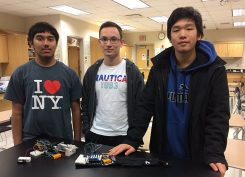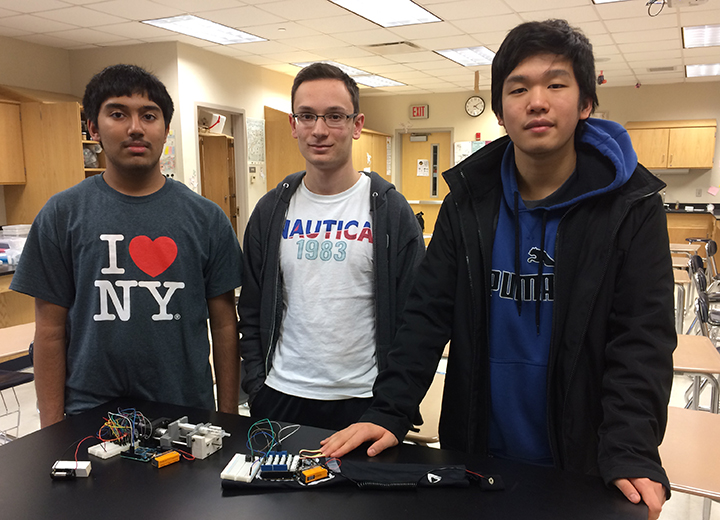By Mark Ambrogi
For the past several months, the Carmel High School IvenTeam has been hard at work on a very important science project.

The team has developed a prototype of a wearable device that would detect and treat seizures by injecting lift-saving medicine into patients with seizure disorders such as epilepsy.
“The initial prototype is still bulky,” sophomore Satvik Kumar said. “We are trying to figure out ways to improve it to make it smaller.”
The CHS IvenTeam will present at the Lemelson-MIT InventTeam Challenge in Cambridge, Mass., in June. The team received a $10,000 grant from Lemelson-MIT to pursue the project.
Along with the team’s interest in neuroscience, the inspiration for the invention was team member Cameron Poulson’s friend from California who suffers from a particularly dangerous form of epilepsy, status epilepticus, which can result in seizures lasting more than five minutes. A prolonged duration of seizures can lead to permanent health damage or even death. But the recovery rate for people who receive treatment within 30 minutes of the start of a seizure is 80 percent.
The team is trying to refine the prototype by late April, when it will be presented at the Conrad Spirit of Innovation Challenge competition at the Kennedy Space Center in Titusville, Fla.
“They’ll be competing against teams from India, Japan and other countries,” said Jacob Fitzgerald, science teacher and co-sponsor of the team with Kathy Hallett.
Kumar said the experience has been invaluable with the teamwork they’ve had to do.
“We’ve had to think a lot,” Kumar said. “We’ve encountered a lot of problems, so it’s helped with problem-solving.”
IvenTeam President Sepehr Asgari, a sophomore, said the group is making progress.
“We’re getting close to being close,” Asgari said.
Sophomore Tony Ou is in charge of the testing device.
“We’re not allowed to do human testing, so we need to find alternative measures in order to test our device,” Ou said. “Our solution was to come up with a device that simulates the human biomarkers, the EMG and EDA biomarkers, so we can do testing without using humans.”
The team has set up a GoFundMe campaign so more team members can make the trip to MIT. It can be found at gofundme.com/carmelinventeam.



